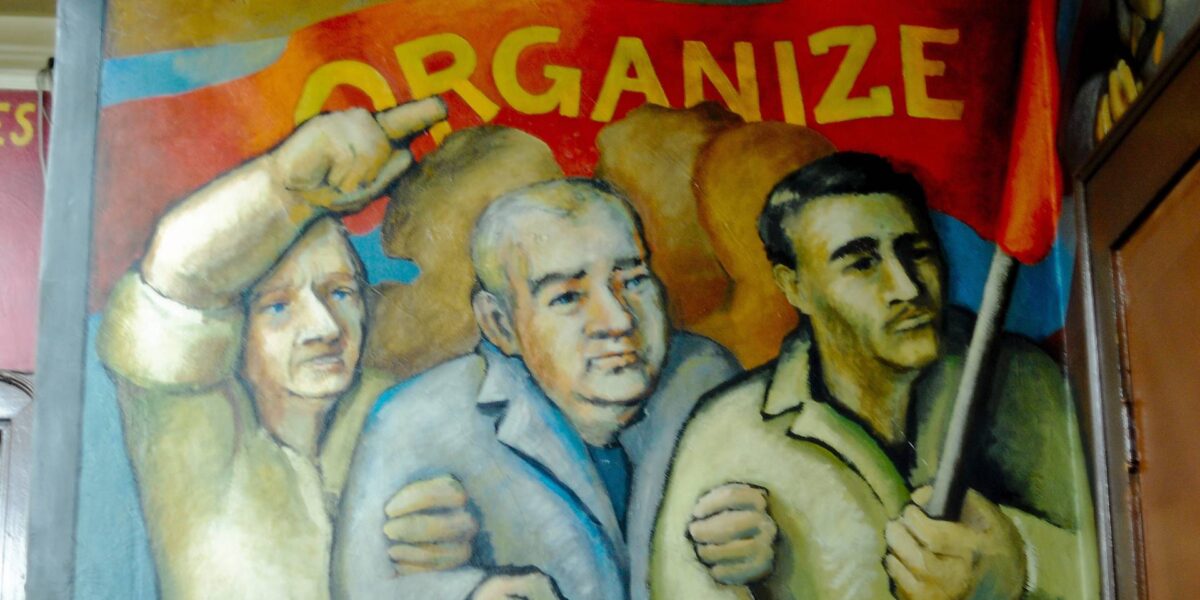Technology, smartphones, social media have all become fundamental parts of modern life. As the digital space becomes more ingrained in daily interactions, the role it plays in union organizing continues to grow.
Last week, Sarah Beth Ryther from Trader Joe’s United and Josh Thole, who helped Minor League baseball players get their first collective agreement, sat down for a panel discussion at the Canadian Labour Congress convention in Montreal on how the made technology work for the labour movement rather than against it.
WIth rising remote work, app-based gig jobs and more, meeting colleagues in person is not a regular occurrence for many. While technology may create some separation, it also provides tools for organizing across wider regions.
“You can capture a whole country using digital organizing,” Thole said in an interview with rabble.ca.
Thole has become very public about his collaboration with the platform Action Network, which he said played a huge role in organizing Minor League baseball players.
“Without technological tools, I wouldn’t be here,” Thole said. “We’d still be organizing, there’s no question.”
Technology becoming a bedrock for organizing
Ryther and Thole both said that technology provides a chance for people to keep themselves organized and focus on building connections with other workers.
“I think we’re finding that you need a high level of organization,” Ryther said. “Technology like Action Builder and Action Network allows you to track folks in real time and anticipate problems you might have with communication.”
“Organizing is fundamentally about relationships. It’s about those connections, and Action Builder and Action Network allow you to make those connections to track those connections,” Ryther added.
The tracking aspect also allows for people to ensure that the whole community is supported while organizing, according to Ryther.
“Being able to see where you have weaknesses in connection, weaknesses in community is what helps turn online interest into in-person mobilization,” Ryther said. ”It’s about finding out how to close that gap.”
Ryther said that Trader Joe’s United is still a “baby union” and that working to unionize more stores is a big undertaking. Technology allows her to understand where the union is at now and where they can go next.
“Action Builder and Action Network are allowing us to scale in a way that doesn’t feel intimidating,” Ryther said.
Ryther added that the tools she is using lay out what an organizer needs in an easy to understand way, which conserves energy for other work.
Beyond keeping an organized list of contacts, allies and anti-union people, technology also helps a movement gain solidarity from those who are not directly affected.
“Social media can be a really, really big tool that we use to make our campaigns visible,” Ryther said. “I’ve had people contact me in many different weird ways. They found old social media accounts, they’ve emailed me at old email addresses, they’ve emailed family members. This kind of shows you how desperate and excited people are. It shows how much energy there is in terms of folks wanting and needing to organize. They go through all these hoops to get in touch.”
Ryther pointed to the success of the Starbucks United’s Twitter account as an example of how social media helps build union support.
While creating initial connections and building union support have been a big part of technology’s role in organizing, one contribution that may not be immediately obvious is the layer of protection that technology provides against union busting.
While Thole was organizing minor league players, he said that combating anti-union sentiment was a huge obstacle.
“We were worried about an anti-union campaign run against our guys. We had to protect the players as much as possible, because they instilled a lot of trust in us,” Thole explained. “So how in fact, were we going to get to all of these guys without having to go into clubhouses or go to minor league facilities? The secrecy was a big piece. Had it not been for Zoom, Action Network and Action Builder it would have been impossible.”



